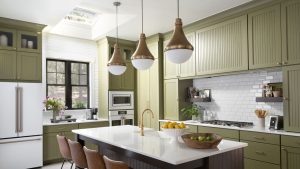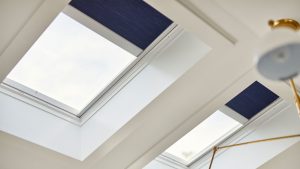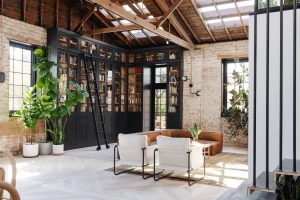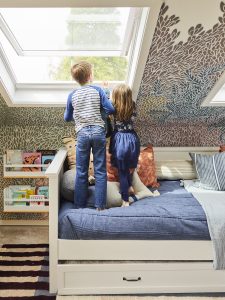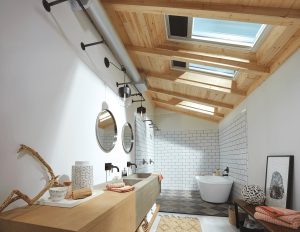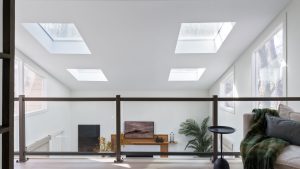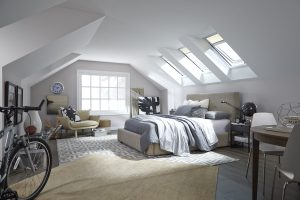
Should you install your skylight to face the North, South, East, and West? The short answer is: if you want a lot of sunlight, install a south-facing or west-facing skylight. If you want less sunlight install a north-facing or east-facing skylight.
Typically, whoever installs your skylight will be able to tell you what is best for your home. This article will go through the main differences between each direction and what would work best for your home.
Don’t forget, the sun rises in the east and sets in the west!
North-Facing Skylights
What they do: A north-facing skylight provides softer, consistent light throughout the day without creating too much heat or a harsh glare because it never experiences direct sunlight. Out of all options, north-facing skylights get the least amount of direct sunlight.
Is it for you: North-facing skylights can be installed in any climate, but are optimal in warmer climates because they get the least amount of direct sunlight throughout the day.
Pros and Cons of North-Facing Skylights: A north-facing skylight can help save you money on your utility bill because it produces natural light and heat all day without affecting the temperature of your home.
North-facing skylights may not be ideal if you are in a colder climate and want more direct sunlight throughout the day.
South-Facing Skylights
What they do: A south-facing skylight provides strong, consistent light throughout the day because it gets the most amount of direct sunlight throughout the day.
Is it for you: If you are in a colder climate or an area that does not have much sunlight throughout the day then a south-facing skylight is a great option.
Pros and Cons of South-Facing Skylights: Skylights that face south can work to naturally illuminate and heat your home saving you money on your utility bill. These are especially beneficial if you live in a colder climate.
A south-facing skylight can produce too much heat in the summer months if you don’t have a skylight shade to go with it.
East-Facing Skylights
What they do: East-facing skylights bring in the most natural light and heat in the morning when the sun is weakest. Remember, the sun rises in the east!
Is it for you: East-facing skylights are optimal for warmer climates but can be installed just about anywhere.
Pros and Cons of East-Facing Skylights: A versatile option, east-facing skylights can be installed in just about any climate. Great at bringing in natural light in the morning without any harsh glares.
Skylights that face east may not be a great option if you want direct sunlight all throughout the day.
West-Facing Skylights
What they do: West-facing skylights give you the most heat because they receive the most direct sunlight in the afternoon when the sun is strongest.
Is it for you: If you live in a cold climate then yes, west-facing skylights are a great option as they can produce heat and natural light.
Pros and Cons of West-Facing Skylights: Great for naturally heating your home in colder months as it receives sunlight at the hottest time of the day.
West-facing skylights could produce too much heat in warmer climates if they are not paired with a shade.

